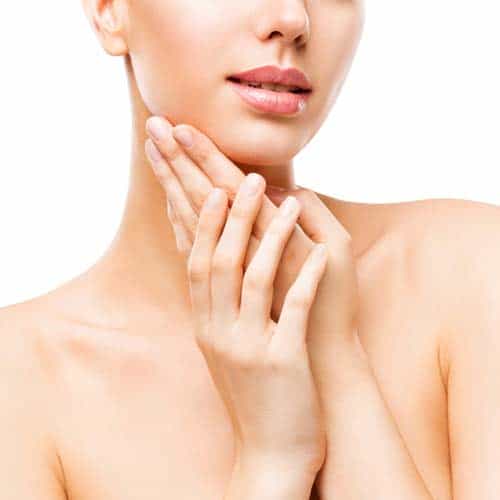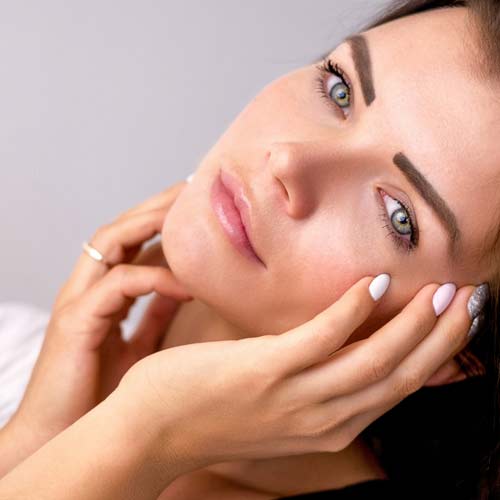Mature Skin: Learn to Identify Your Skin Type
As we age we need to alter our beauty routine in order to accommodate for the changes that occur over time in our skin.
My website aims at helping you look healthy and the best you can for your age. Beauty is not a competition, it doesn’t belong to the youth and it has nothing to do with being winkle-free.
Beauty is a way of Being.
Mature skin tends to be on the ‘dryer’ side but it is possible that your skin is oily or combination (as well as sensitive).
We’ve already looked at what happens to your skin as you age (LINK!!!) so now it’s time for you to be able to identify what’s your skin type.
Just as a quick recap, here’s what happens to your skin as you age:
- Thinning of the skin
- Appearance of dry patches
- Age spots
- Spider veins
- Sagging skin
- Fine lines and wrinkles
Whatever your skin type you will ALWAYS benefit from giving it attention and regular care. A daily regime is optimal although I must admit I don’t follow this ‘rule’ 100% all of the time. At times I have found it impossible to follow my beauty routine (when I’m staying at relatives or the time I was building my home) which made it very difficult for me to follow a regime.
Still, I didn’t feel I was failing; I knew these were times where it was just impossible for me to follow through. And that’s ok. As long as you go back to your routine you’ll be fine.
Identify Your Skin Type

Here’s a very quick guide you can follow to identify what’s your skin type. There are countless great articles out there that will go into depth regarding this but I made it very simple for you to find out what sort of skin you have.
**Remember your skin changes over time, particularly during menopause, pregnancy and puberty, and that this guideline is just that… a guideline.
- If your skin has always felt ‘dry’ you most probably have dry skin
- If your skin feels dry ‘at times’ your skin gets easily dehydrated
- If your skin shines within 1 hour of cleansing then you most probably have oily skin
- If your skin shines after cleansing after lunchtime you probably have combination skin
- If your skin doesn’t shine after cleansing after lunchtime you probably have normal skin
Hope the above chart makes sense!
A Quick Skin Type Guide

Normal skin will feel smooth and supple and is not prone to acne. As we get older it tends to go on the dryer side thus requiring richer moisturisers.
Combination skin will be oily in some places and normal or dry in others. It will probably have visible pores, shiny skin on the forehead and the breakouts as well as patches of flaky skin.
Oily skin shows shiny patches and is usually prone to acne and pimples. Pores can show up as enlarged particularly around the nose and chin which contribute to the excess of sebum (oil) production.
Dry skin shows visible lines, redness, flakiness, less elasticity, dry patches and invisible pores (which might be something some people like). Less elasticity means puffier eyes.
Sensitive skin is prone to redness and itching as well as flaking of the skin. It can be susceptible to allergic reactions. Acne, psoriasis, rosacea and eczema can show up. Better to always patch test products you’ve never tried before to be on the safe side.
Don’t Worry if You’re Not Sure of Your Skin Type
Maybe your skin hasn’t changed that much over time or maybe you’re starting to see oiliness ‘disappear’ (that’s my particular case). Maybe you used to have dry skin and not you’re now seeing your skin getting even drier as time goes by.
Either way, don’t worry about changing skincare routine too much (if you already follow a routine, that is). In fact, a similar skincare routine should apply for young skin and mature skin but with mature skin we will make a few ‘adjustments’ or ‘refinements’ to your skincare in order to pay a close look at delicate skin, fine lines, wrinkles and hyperpigmentation.
Having mature skin means choosing natural products that contain ingredients which have high content of vitamin A, antioxidants, vitamin E, collagen-boosting, peptides and the right omega fatty acids.
